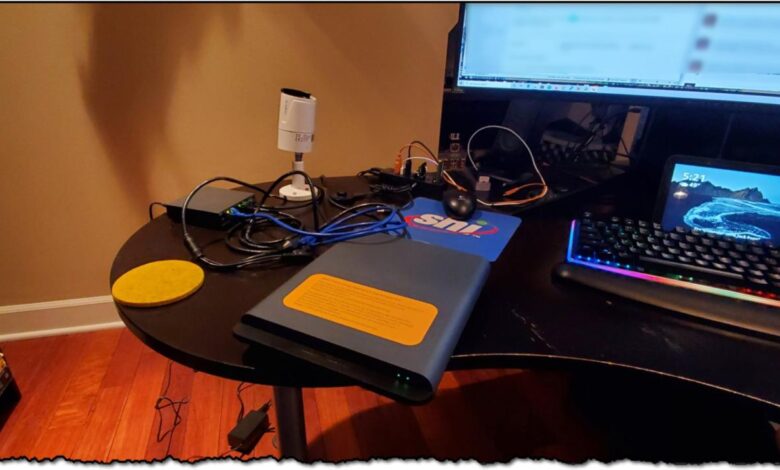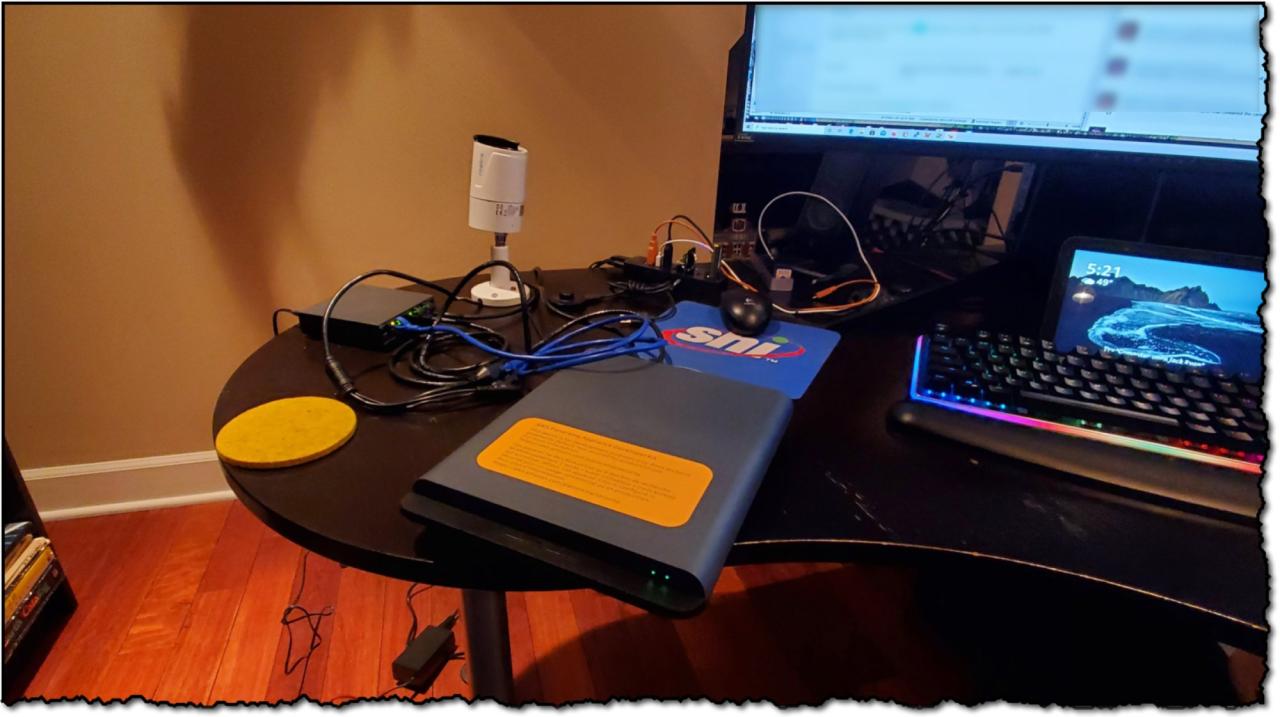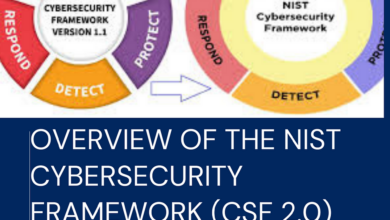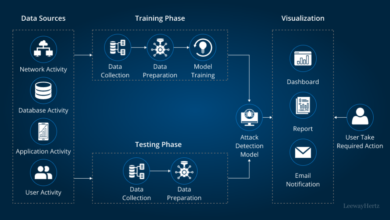
Amazon Employees Spy on Cloud Cam Users
Amazon employees spy on users of cloud cams – the headline alone is chilling, right? This isn’t some far-fetched conspiracy theory; reports suggest that Amazon employees have access to sensitive data from users’ Ring and other cloud-connected cameras. This raises serious questions about privacy, security, and the trust we place in tech giants. We’re diving deep into this issue, exploring the extent of employee access, the types of data involved, and the potential consequences – both for users and Amazon itself.
We’ll examine the potential motivations behind employee data access, from legitimate troubleshooting to malicious intent. We’ll also look at the legal and ethical implications, considering privacy laws and the potential damage to Amazon’s reputation. Finally, we’ll discuss the steps Amazon (and other companies) can take to improve security and rebuild user trust. Get ready for a revealing look behind the curtain of your smart home security.
Employee Access to Cloud Cam Data
Amazon’s cloud camera services, like Ring, raise important questions about the level of access employees have to user data. While Amazon assures users of robust security measures, the potential for unauthorized access remains a concern, warranting a closer examination of employee access levels, security protocols, and potential vulnerabilities.
Amazon Employee Access Levels
Amazon likely employs a tiered system for employee access to cloud camera data, mirroring practices in other large tech companies. This tiered system aims to limit access based on job responsibilities and security clearance. Lower-level employees might have limited or no access to raw video footage, while higher-level engineers or support staff might require access for debugging, troubleshooting, or responding to customer inquiries.
The specifics of this system are confidential, but the principle of least privilege—granting only the necessary access—is likely a guiding principle.
Security Protocols to Prevent Unauthorized Access
Several security protocols likely exist to prevent unauthorized access to user data. These might include robust authentication systems (multi-factor authentication, strong password requirements), encryption of data both in transit and at rest, access control lists (ACLs) limiting access based on roles and permissions, regular security audits, and intrusion detection systems. Data masking or anonymization techniques could also be used to limit the exposure of sensitive information.
Furthermore, rigorous employee background checks and training programs are likely in place to reinforce security awareness and responsible data handling.
Potential Vulnerabilities and Exploitation
Despite these protocols, vulnerabilities could exist. A sophisticated phishing attack could compromise employee credentials, granting an attacker access to user data. A zero-day exploit in the system’s software could bypass security measures. Insider threats, whether malicious or negligent, pose a significant risk. A disgruntled employee with sufficient access could potentially leak or misuse data.
Furthermore, flaws in access control mechanisms, such as poorly configured ACLs or insufficient auditing, could allow unauthorized access. Finally, vulnerabilities in the underlying infrastructure, such as server-side weaknesses, could be exploited to gain access.
Employee Roles and Access Levels
| Role | Access Level | Data Accessed | Security Clearance |
|---|---|---|---|
| Customer Support Representative | Limited | Account information, basic troubleshooting data (may include anonymized metadata related to camera events) | Basic |
| Software Engineer | Medium | System logs, debugging information, anonymized or aggregated data for performance analysis (potentially access to specific user data for troubleshooting with explicit authorization and oversight) | Medium |
| Security Auditor | High | System logs, access logs, security audit data (potential access to user data for specific investigations with strict oversight and justification) | High |
| Senior Management (with appropriate authorization) | Full (with strict controls and oversight) | All data (access strictly controlled and audited) | Top Secret |
The Nature of User Data Accessed
The revelation that Amazon employees may have accessed data from Cloud Cam users raises serious concerns about the nature of the data involved and the potential for misuse. Understanding the types of data accessed, their sensitivity, and the implications of unauthorized access is crucial to assessing the full impact of this situation. This goes beyond simple technical details and delves into the privacy rights of individuals and the trust placed in technology companies.The types of data accessible through Cloud Cam are multifaceted and potentially highly sensitive.
This includes, but is not limited to, video recordings, audio recordings, and associated metadata. Video and audio recordings capture visual and auditory information from users’ homes, potentially including private conversations, personal activities, and even sensitive moments. Metadata, while seemingly less intrusive, can still reveal significant information about the recording, such as timestamps, location data (if enabled), and device information.
This combination of data types offers a comprehensive view into users’ lives, far exceeding the scope of what many might expect.
Sensitivity of Accessed Data and Potential for Misuse
The sensitivity of data accessed from Cloud Cam is exceptionally high. Video and audio recordings from a home environment often depict intimate details of a person’s life, including family interactions, medical conditions, and financial transactions (if visible in the camera’s view). The potential for misuse is substantial. Unauthorized access could lead to identity theft, blackmail, stalking, emotional distress, and other serious harms.
Even seemingly innocuous metadata, such as timestamps and location data, can be used to build a detailed profile of a user’s habits and routines, potentially facilitating targeted harassment or criminal activity. The potential for such misuse highlights the critical need for robust data protection measures and strict adherence to privacy policies.
Implications of Accessing Data Without User Consent, Amazon employees spy on users of cloud cams
Accessing Cloud Cam data without explicit and informed user consent constitutes a serious breach of trust and a potential violation of various privacy laws and regulations, such as GDPR and CCPA. This unauthorized access undermines the fundamental principle that users should have complete control over their personal data and how it is used. The lack of consent not only violates ethical standards but also exposes Amazon to significant legal and reputational risks.
The potential for legal action from affected users and regulatory investigations could have severe financial and operational consequences. Furthermore, such breaches erode public trust in Amazon’s ability to protect user data, potentially impacting future business relationships and market share.
Comparison of Amazon’s Data Access Policies with Competitors
A comprehensive comparison of Amazon’s data access policies with those of competitors in the cloud storage market requires detailed analysis of individual company policies and practices. However, the incident highlights a critical need for greater transparency and stricter accountability within the industry. While some competitors may have similar internal access policies, the lack of public information makes direct comparison difficult.
The incident underscores the importance of independent audits and robust oversight mechanisms to ensure that all cloud storage providers maintain high standards of data protection and user privacy. A thorough review of industry best practices and the development of stricter regulations are crucial to prevent similar incidents in the future.
Motivations for Employee Data Access
Understanding why Amazon employees might access user data from Cloud Cam is crucial for establishing robust security protocols. Access can be legitimate, driven by the need to resolve technical issues or improve the service, but it can also stem from malicious intent or simple negligence. A clear picture of these motivations is vital for preventing future breaches and ensuring user privacy.
Legitimate access to user data is often necessary for maintaining the functionality and improving the quality of the Cloud Cam service. Employees, particularly those in technical support and engineering roles, might need to review video footage to diagnose and resolve specific problems reported by users. For instance, a user might report that their camera is not recording properly; an employee might need to review the footage to identify the root cause of the issue.
Similarly, software engineers may need access to data to test new features or debug existing code, ensuring the smooth and secure operation of the system. This access should, of course, be strictly controlled and logged.
Legitimate Reasons for Data Access
Examples of legitimate reasons for employee access include debugging software malfunctions, investigating user-reported issues, and conducting performance testing of the Cloud Cam system. A software engineer might need to access a short clip of data to identify a bug causing intermittent video loss. A customer service representative might review a video snippet to understand why a user’s motion detection isn’t working correctly.
The news about Amazon employees spying on users of Cloud Cam footage is seriously unsettling. It makes you wonder about the security of all our data, and how much we really trust these tech giants. This whole situation highlights the need for robust, secure app development, which is why I’ve been researching the future of app building, like what’s discussed in this great article on domino app dev the low code and pro code future , to help improve data privacy and security.
Ultimately, the Amazon Cloud Cam situation underscores the critical importance of prioritizing user privacy in all aspects of tech development.
These actions, when performed within established protocols and with appropriate authorization, are essential to maintaining a high-quality service.
Unauthorized Data Access Scenarios
Unauthorized access to user data can result from a variety of factors, ranging from malicious intent to accidental breaches. A malicious employee might gain unauthorized access to exploit sensitive information for personal gain, such as identity theft or blackmail. Conversely, an accidental breach might occur due to negligence, such as failing to log out of a user account or leaving a workstation unattended.
Even well-intentioned employees can inadvertently compromise user data through human error, such as mistakenly accessing the wrong account or failing to follow established security protocols.
Hypothetical Scenario: Consequences of Unauthorized Access
Imagine a scenario where an employee, driven by curiosity, accesses the Cloud Cam footage of a user’s home without authorization. This employee then shares this footage with a third party, who uses it to identify and harass the user. The consequences could be devastating for the user, ranging from emotional distress and privacy violation to potential physical harm.
Amazon would face significant legal repercussions, reputational damage, and a loss of user trust. This highlights the critical importance of robust security measures and stringent access control policies.
Potential Motivations for Unauthorized Access
It’s crucial to categorize potential motivations for unauthorized access to understand the vulnerabilities within the system and develop effective preventative measures.
Understanding the range of motivations is key to creating effective safeguards. These motivations, whether malicious, negligent, or accidental, all highlight the need for robust security protocols and employee training.
- Malicious Intent:
- Financial gain (e.g., selling data to third parties).
- Personal gratification (e.g., voyeurism).
- Revenge or sabotage.
- Extortion or blackmail.
- Negligent Behavior:
- Failure to follow established security protocols.
- Inadequate password protection.
- Leaving workstations unattended.
- Poor data handling practices.
- Accidental Breaches:
- Mistakenly accessing the wrong account.
- Human error in data retrieval processes.
- Software glitches or vulnerabilities.
Legal and Ethical Implications

The unauthorized access of user data from Amazon’s cloud cams presents a complex web of legal and ethical challenges, impacting not only the affected users but also Amazon’s reputation and future operations. The ramifications extend far beyond simple privacy violations, encompassing potential legal repercussions under various national and international laws and raising serious ethical questions about corporate responsibility and employee oversight.The severity of the legal ramifications depends heavily on the nature of the accessed data and the specific jurisdictions involved.
Unauthorized access to personal data can lead to significant legal penalties under laws such as the GDPR (General Data Protection Regulation) in Europe, the CCPA (California Consumer Privacy Act) in California, and other similar data privacy regulations around the globe. These laws often mandate hefty fines for companies that fail to adequately protect user data and can also result in class-action lawsuits from affected individuals.
Further complicating matters, the legal landscape is fragmented; a consistent international standard for data privacy is still lacking, leading to a complex patchwork of regulations.
Legal Ramifications Under Privacy Laws
Unauthorized access to user data, particularly sensitive personal information captured by cloud cams, directly violates numerous privacy laws worldwide. For example, the GDPR mandates that companies obtain explicit consent for data processing and implement robust security measures to prevent unauthorized access. Breaches can result in substantial fines, potentially reaching millions of euros, depending on the severity and the number of affected individuals.
Similarly, the CCPA provides California residents with specific rights regarding their personal data, including the right to know what data is collected, the right to delete data, and the right to opt-out of data sales. Violation of these rights can lead to legal action and significant financial penalties. The specific legal consequences vary based on the jurisdiction and the nature of the data accessed, but the potential for significant legal liability is undeniable.
Ethical Considerations of Employee Data Access
Beyond the legal ramifications, the ethical implications of employee access to sensitive user data are equally profound. Employees entrusted with access to such data have a significant responsibility to uphold user privacy and confidentiality. Accessing user data without proper authorization, even for seemingly innocuous reasons, is a serious breach of trust and a violation of ethical professional conduct.
This behavior undermines the fundamental principle of user trust, which is essential for the success of any technology company relying on user-generated data. Companies have an ethical duty to implement strict internal controls and policies to prevent such violations and to ensure that employees understand and adhere to these policies. The lack of robust ethical guidelines and employee training can create an environment where such breaches are more likely to occur.
Comparison of Data Privacy Frameworks
Data privacy laws differ significantly across countries. The GDPR, for instance, is considered one of the strictest data privacy regulations globally, imposing stringent requirements on data processing and imposing significant penalties for non-compliance. In contrast, some countries have less comprehensive data privacy laws, leading to a disparity in the level of protection afforded to users. This creates challenges for multinational companies like Amazon, which must navigate a complex web of legal requirements in different jurisdictions.
The lack of a harmonized global approach to data privacy highlights the need for international cooperation and the development of consistent standards to ensure adequate protection for users worldwide.
Potential Reputational Damage to Amazon
Incidents involving unauthorized employee access to user data can cause significant reputational damage to Amazon. Loss of user trust is a severe consequence, potentially leading to a decline in customer loyalty and market share. Negative media coverage and public outcry can further exacerbate the damage, impacting the company’s brand image and investor confidence. The long-term effects of such incidents can be substantial, affecting the company’s ability to attract and retain both customers and talent.
The potential for reputational harm underscores the importance of robust data security measures and transparent communication with users in the event of a data breach. The case of the cloud cam data access highlights the potential for a major reputational crisis if such incidents are not handled swiftly and effectively.
Preventive Measures and Safeguards: Amazon Employees Spy On Users Of Cloud Cams

The revelation of employee access to Cloud Cam data has understandably raised serious concerns about user privacy. Amazon, like any company handling sensitive data, needs robust security measures to prevent unauthorized access and maintain user trust. While the specifics of their internal security protocols are confidential, we can examine existing and potential safeguards to protect user data.Existing security measures likely include multi-factor authentication for employee access, data encryption both in transit and at rest, role-based access control limiting access based on job responsibilities, and regular security audits and penetration testing.
However, the recent incidents highlight the need for stronger, more proactive measures.
Amazon’s Existing Security Measures
Amazon likely employs a multi-layered security approach. This probably involves strict access control lists (ACLs) defining which employees can access specific data based on their roles. Data encryption, using techniques like AES-256, would protect data even if it were accessed illicitly. Regular security audits and vulnerability assessments are also crucial for identifying and mitigating potential weaknesses. These audits may involve internal security teams and external penetration testers to simulate real-world attacks and uncover vulnerabilities.
Finally, employee training on data security and privacy policies is essential.
Additional Security Measures to Enhance Data Protection
Beyond the existing measures, several enhancements could significantly improve data protection. Implementing stricter access controls, such as zero-trust security models, would require continuous authentication and authorization, even for internal employees. This would minimize the risk of lateral movement within the system by a compromised account. Furthermore, data minimization – only collecting and storing the absolutely necessary data – reduces the potential impact of a breach.
Enhanced monitoring of employee activity, including alerts for unusual access patterns, would help detect suspicious behavior early on. Finally, more rigorous background checks and ongoing security awareness training for employees are vital.
Improved Employee Data Access Protocols
A step-by-step procedure to improve employee data access protocols could look like this:
1. Implement a Zero-Trust Model
All access requests, regardless of employee role, would be subject to rigorous authentication and authorization.
2. Enforce Strict Need-to-Know Access
Employees should only have access to the data absolutely necessary for their job functions. Access should be granted on a least privilege basis.
3. Implement Robust Auditing and Logging
All data access attempts, successful or not, should be meticulously logged and regularly audited for suspicious activity. These logs should include timestamps, user ID, accessed data, and the reason for access.
4. Automated Alerting System
The system should automatically generate alerts for unusual access patterns or potential breaches, such as excessive data downloads or access outside normal working hours.
5. Regular Security Awareness Training
Employees should receive regular training on data security best practices and the company’s data access policies. This training should cover phishing awareness, password security, and the consequences of unauthorized data access.
6. Independent Security Audits
Regular, independent security audits should be conducted to evaluate the effectiveness of the security measures in place and identify areas for improvement.
Features of a Robust Data Access Control System
A robust data access control system for cloud camera data needs several key features. First, it requires granular access control, allowing administrators to define precise permissions for each employee. Second, strong auditing capabilities are essential, generating detailed logs of all access attempts, including successful and failed attempts, with timestamps and user information. These logs should be tamper-proof and regularly reviewed.
Access logs should be stored separately and encrypted. Third, the system should integrate with other security tools, such as intrusion detection systems, to provide a comprehensive security posture. Finally, the system should be designed with data minimization in mind, only allowing access to the minimum necessary data for each task. This limits the potential damage from a security breach.
Impact on User Trust and Confidence
The revelation that Amazon employees accessed user data from Cloud Cam devices has dealt a significant blow to user trust and confidence. This breach of privacy, regardless of the stated motivations, erodes the fundamental belief that personal data is safe and secure within Amazon’s ecosystem. The impact extends beyond individual users, potentially affecting Amazon’s overall reputation and long-term market position.The potential for misuse of sensitive data, even if unintentional, is a major concern.
Users rely on Amazon for secure storage and processing of their data, and this incident raises serious questions about the effectiveness of Amazon’s internal controls and security protocols. The feeling of being watched, even if indirectly, creates a chilling effect, leading to apprehension and a diminished sense of security. This, in turn, can result in users seeking alternative cloud storage solutions, impacting Amazon’s market share and revenue.
Strategies to Rebuild Trust
Rebuilding trust after such a breach requires a multi-pronged approach that demonstrates genuine commitment to data privacy and security. This involves transparent communication, concrete action, and a long-term strategy focused on regaining user confidence. Amazon needs to clearly explain the extent of the data access, the measures taken to prevent future incidents, and the steps implemented to address the concerns of affected users.
This includes offering compensation for the breach of trust, enhancing security protocols, and providing users with greater control over their data. A simple apology is insufficient; demonstrable actions are crucial.
Long-Term Effects on Amazon’s Brand Reputation and Customer Loyalty
The long-term consequences of this incident could be substantial. Damage to Amazon’s brand reputation can be slow to repair, impacting customer loyalty and attracting negative press. This could manifest in several ways: decreased customer acquisition, increased customer churn, and a decline in investor confidence. For example, a similar data privacy scandal at Facebook led to significant reputational damage and regulatory scrutiny, impacting its stock price and user base.
Amazon needs to proactively address the situation to avoid a similar trajectory. Failure to effectively manage this crisis could result in long-term financial losses and a diminished market share.
Public Relations Campaign to Address User Concerns
A successful public relations campaign should prioritize transparency and accountability. The campaign should avoid corporate jargon and focus on clear, concise communication that acknowledges user concerns. Key elements could include: a detailed public statement outlining the incident, the steps taken to address it, and future preventative measures; proactive engagement with users through various channels (social media, email, etc.) to address their questions and concerns; an independent audit of Amazon’s security practices to demonstrate commitment to improved data protection; and a revised privacy policy that offers greater transparency and user control over their data.
The campaign needs to showcase a commitment to continuous improvement and to demonstrate that Amazon is actively learning from this incident. Examples of successful PR campaigns following data breaches, such as those adopted by companies like Equifax (albeit with mixed results), could provide valuable lessons. A well-executed campaign can mitigate the damage and contribute to regaining user trust, but only if it’s backed by meaningful and lasting changes.
Conclusion

The revelation that Amazon employees might have access to your cloud cam footage is deeply unsettling. While some access may be justified for troubleshooting, the potential for misuse and the lack of transparency are alarming. The issue highlights a critical need for stricter data protection measures and greater accountability from tech companies. Ultimately, regaining user trust requires proactive steps, robust security protocols, and a commitment to transparency.
The future of smart home security hinges on addressing these concerns head-on.
FAQ Compilation
What specific data can employees access?
Reports suggest access to video and audio recordings, metadata (like timestamps and locations), and potentially even user account information depending on the employee’s role and access level.
How can I prevent my data from being accessed?
While you can’t completely eliminate the risk, carefully reviewing your privacy settings within the Amazon/Ring app, limiting camera access to specific areas, and using strong passwords are good first steps. Consider using encryption for your home network as well.
What legal recourse do I have if my privacy is violated?
This depends on your location and the specifics of the violation. You may have grounds to file a complaint with relevant data protection authorities and/or pursue legal action depending on the applicable laws in your jurisdiction. Consulting with a lawyer specializing in data privacy is recommended.
Does Amazon actively monitor employee access to user data?
Amazon claims to have security measures in place to monitor and audit employee access, but the specifics are not publicly available. The effectiveness of these measures is a key area of concern.





